
Creating contrast in the garden is such an important design principle, I thought it would be helpful to show the many different ways I accomplished this in my modified meadow.
You may remember my post Creating a Rain Garden (if not, click here.)
In that article, I mentioned my goal was not only to transform this section of my garden into a Rain Garden but to also have it serve double-duty as a Modified Meadow/Pollinator Garden.
Since the rain in my Zone-9 garden comes to a complete stop in May, I needed to capture every last drop of water to help fortify my new pollinator plants.
Of course, I still have to irrigate my garden, especially during the hot summer.
However, because I’ve carefully chosen a mix of native and Mediterranean plants that easily thrive with weeks of 100+ temps, my garden has looked pretty amazing throughout the year.
I happened to be out of town during the week we experienced temperatures ranging from 105-114 (no joke!) and fully expected to see a crispy, crunchy garden when I returned.
Boy, was I pleasantly surprised! Not only was my garden looking beautiful, with minimal burnt leaves, but the insects were out in full force.
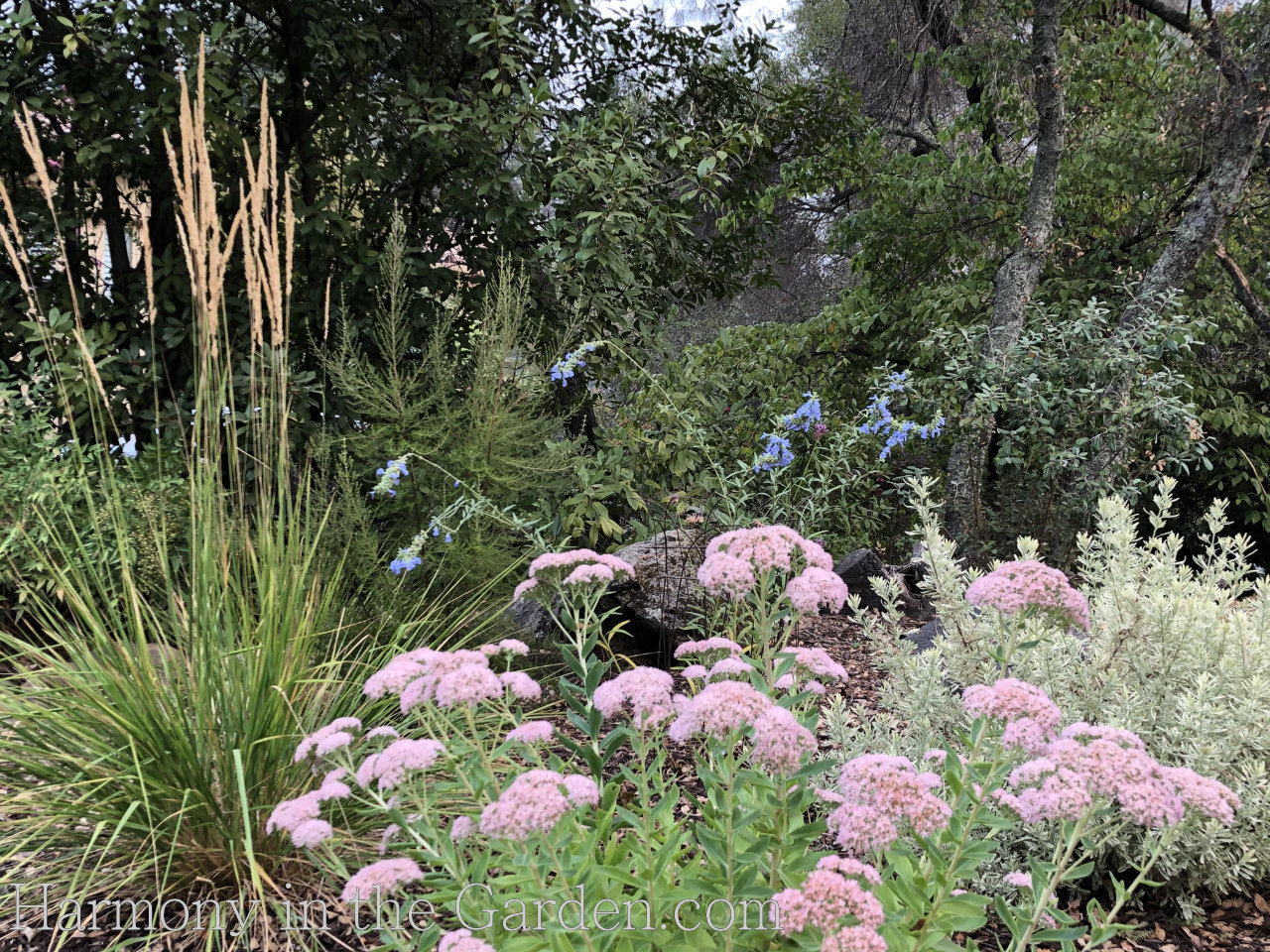
When creating my modified meadow garden, it was important that it was aesthetically pleasing, and not just a mish-mash of one of this and one of that.
When the focus is on meadow and pollinator plants, it can easily turn into a garden that has an overabundance of teeny tiny flowers on plants that have teeny tiny leaves.
Therefore, one of the main design concepts I focused on was the importance of contrast.
After all, I wanted this garden to please myself as well as the butterflies, bees, and hummingbirds.
Contrast, Contrast, Contrast!
1. Contrast in foliage size & shape

It seems many of the best pollinator plants have foliage that’s similar in size and shape (ie: small and narrow).
So, to introduce contrast it was important to include as many large-foliaged plants as possible.
Luckily, this area is backed by an existing 20-foot photinia hedge, which has dark green leaves year-round except for the spring, when the new growth is vibrant red.
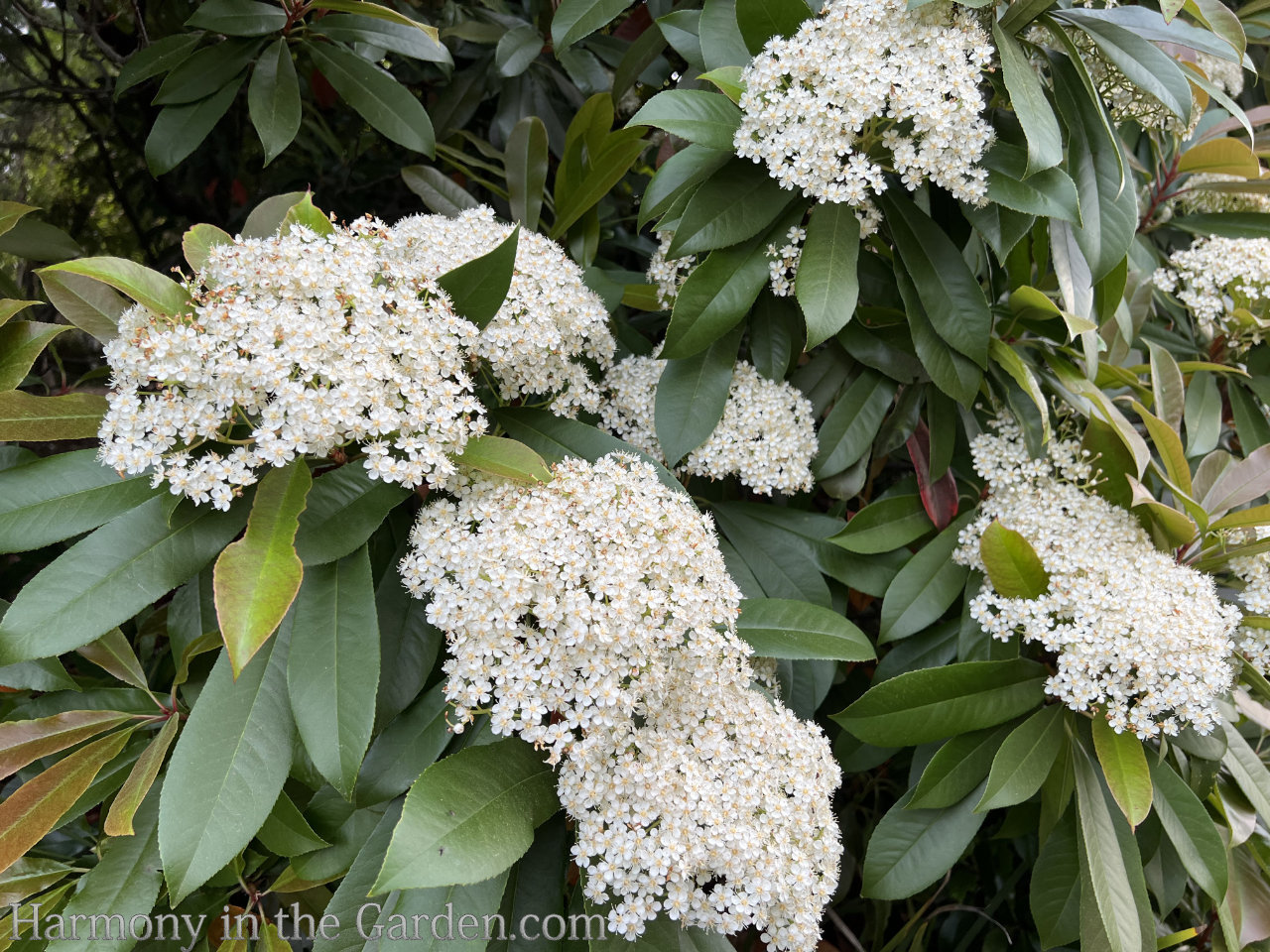
Not only does the photinia’s oversized leaves provide contrast, but the late winter flowers provide a bounty of nectar for bees.
I can literally hear the hedge humming across my entire front garden!
In addition to the hedge, I planted three citrus trees – a ‘Washington’ orange, a ‘Meyer’ lemon, and a Mandarinquat.
They also have lush, dark green, oversized foliage year-round, and the most wonderful scent, which brings in bees and hummingbirds from miles around.
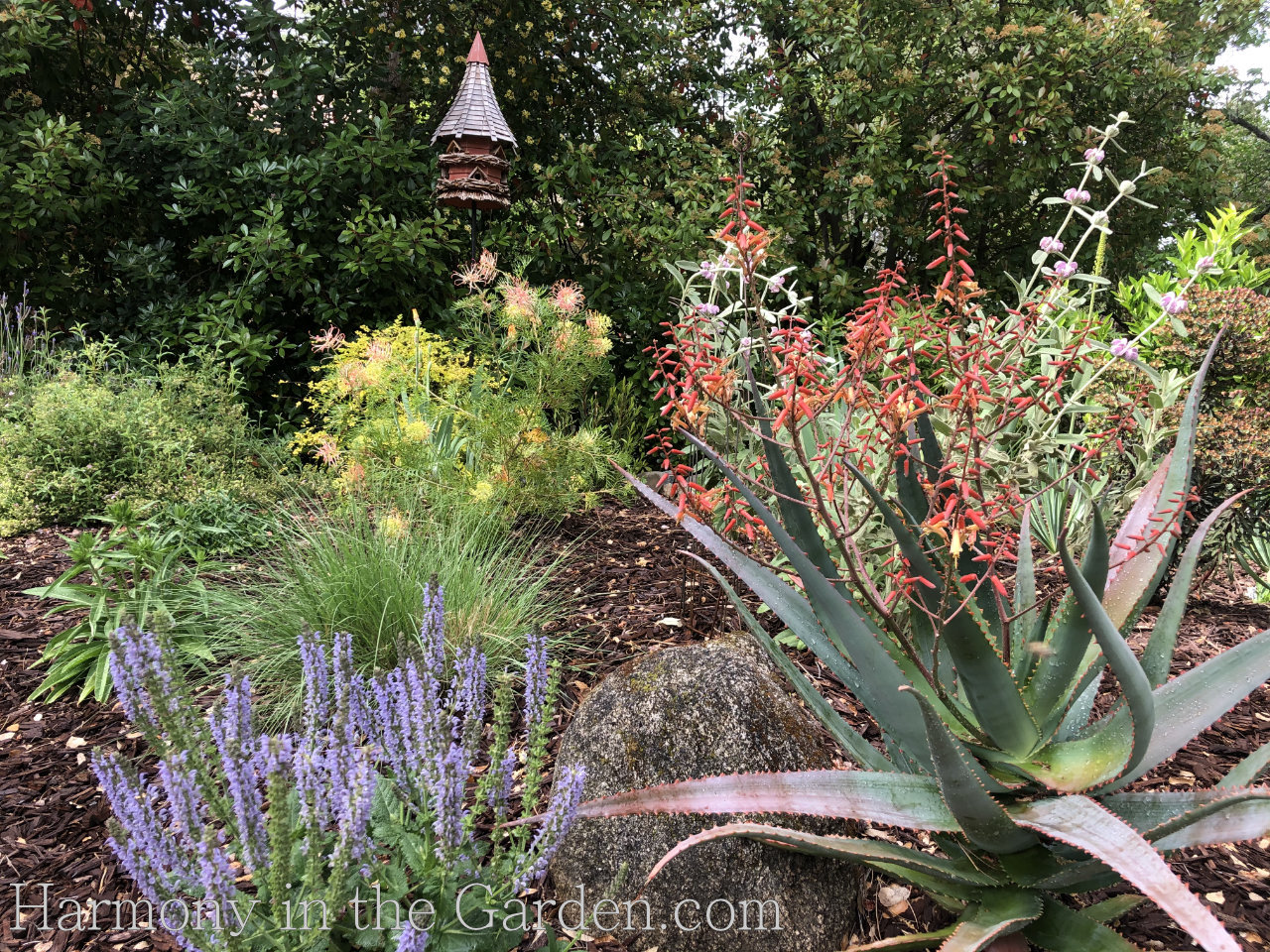
The bold foliage of the magnificent Aloe ‘Fire Ranch’ is stunning year-round, and would be reason enough to include it in my garden.
But the explosion of tiny orange flowers on 2-foot candelabras (that last for a LONG time) make it one of my favorites for pollinators. The hummingbirds would agree.
The same goes for the foliage and flowers of the Aloe ‘Blue Elf’.
My ‘Artichoke Pot’ (below) with the large-leaved Agave surrounded by asters, is another year-round plant that helps to break up the sea of fine foliage.
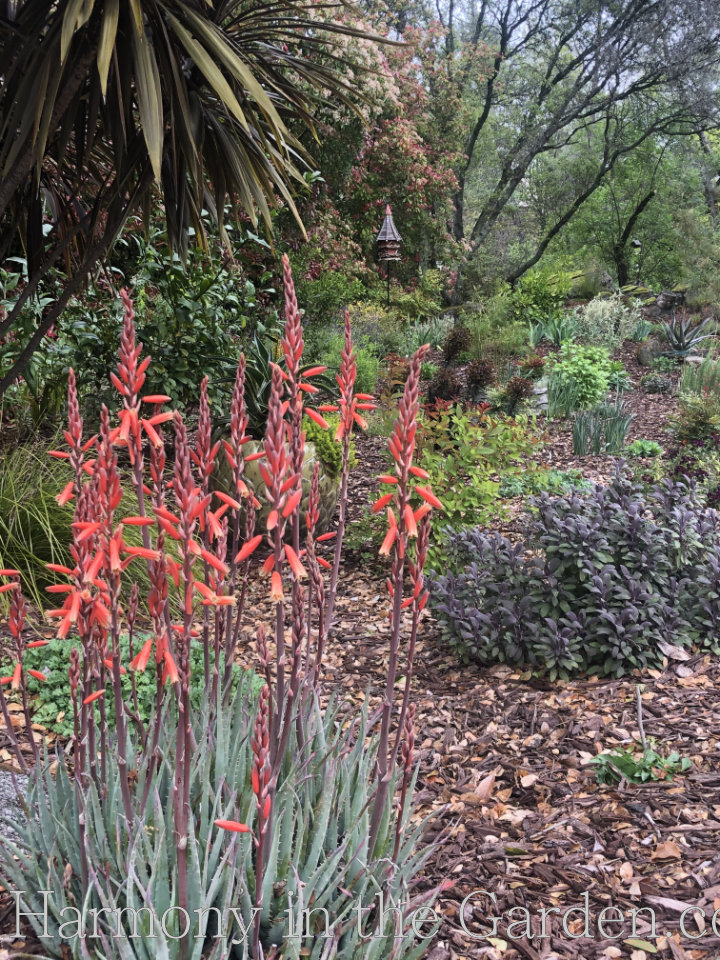

2. Contrasting foliage color
Gray/Silver Foliage
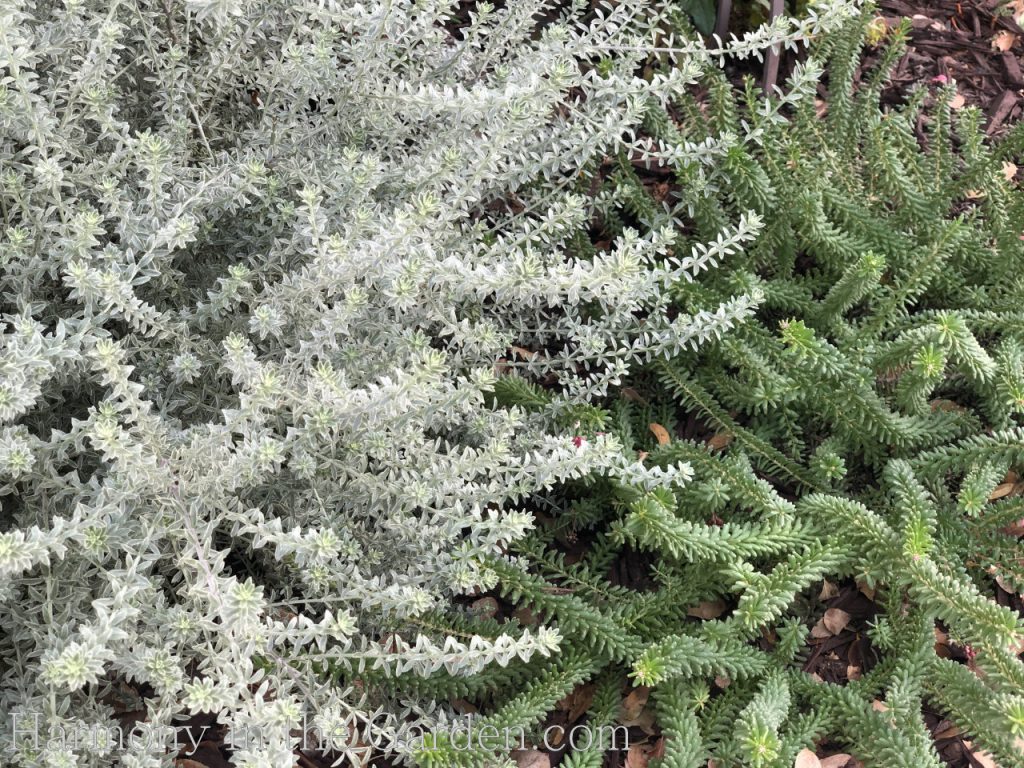
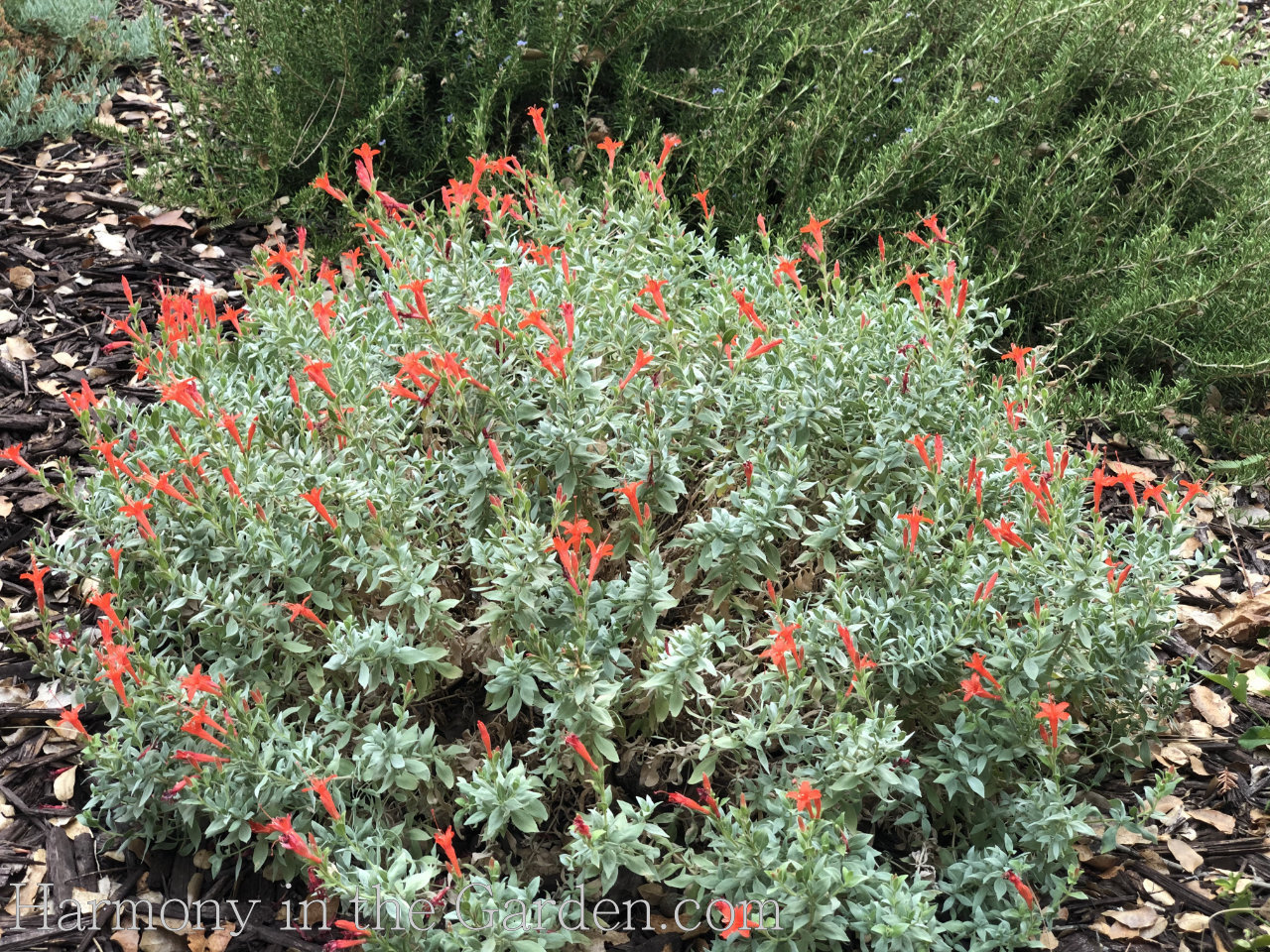
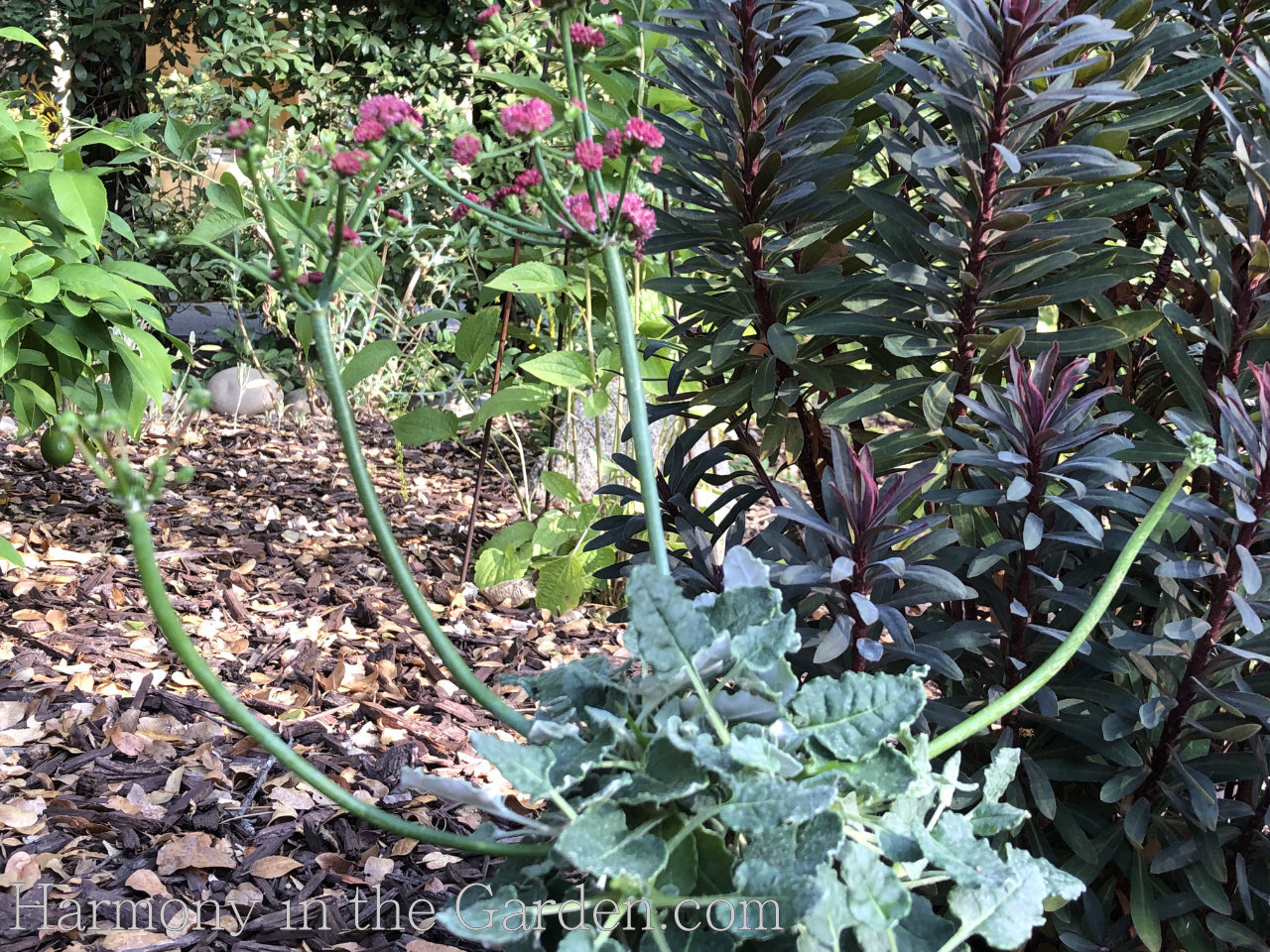
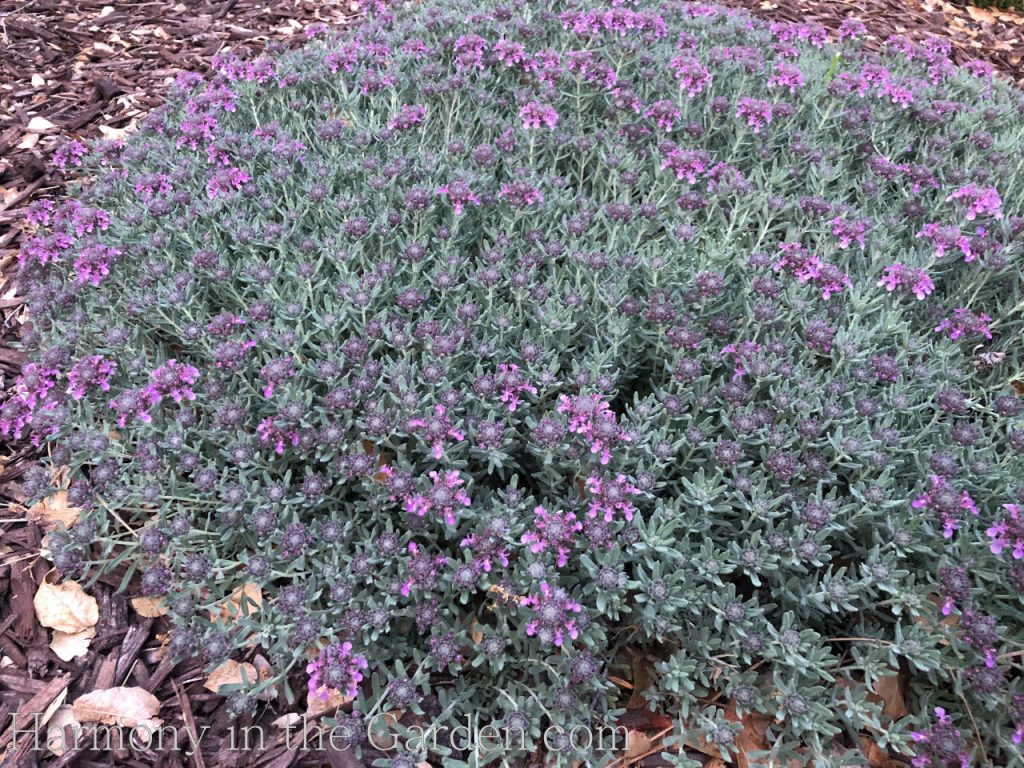
Maroon/Burgundy Foliage
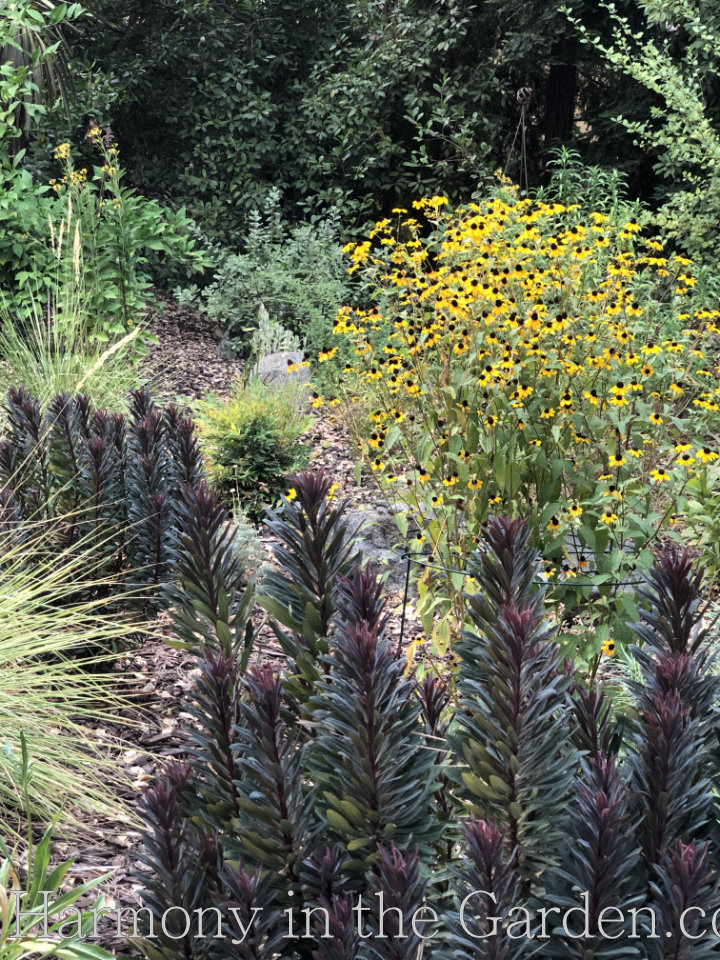
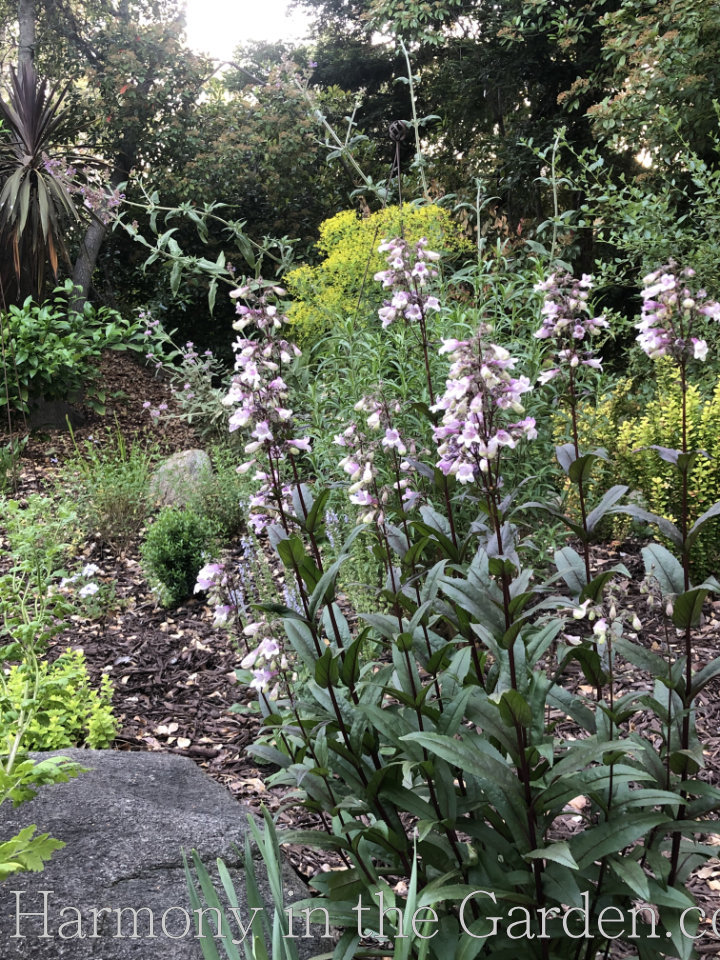

Dark Green Foliage


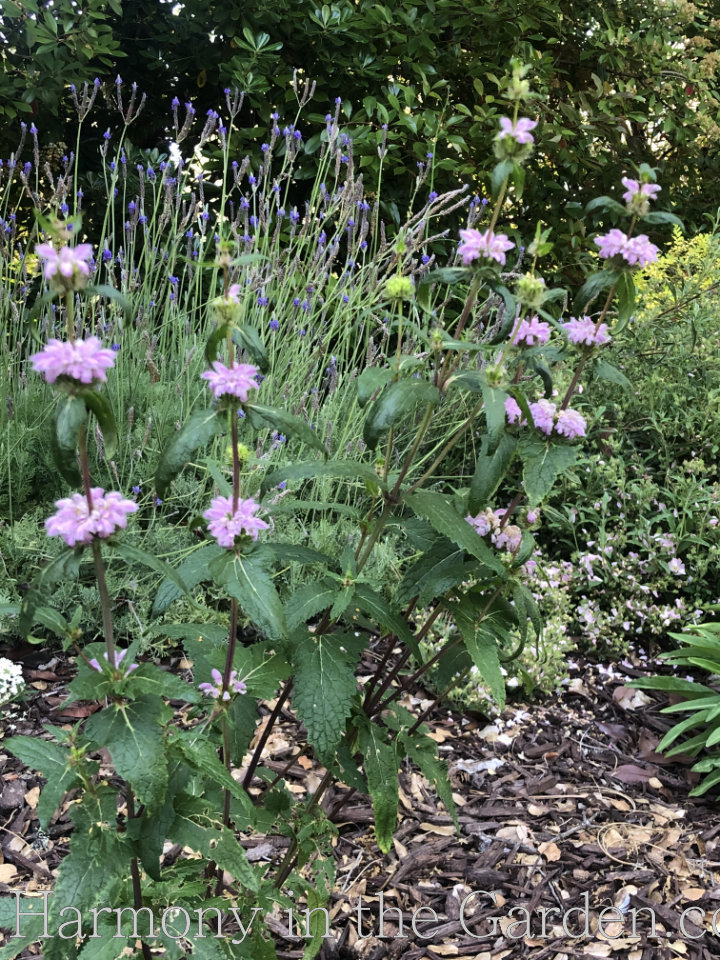
3. Contrasting layers: low, middle, and tall
Lowest Layer
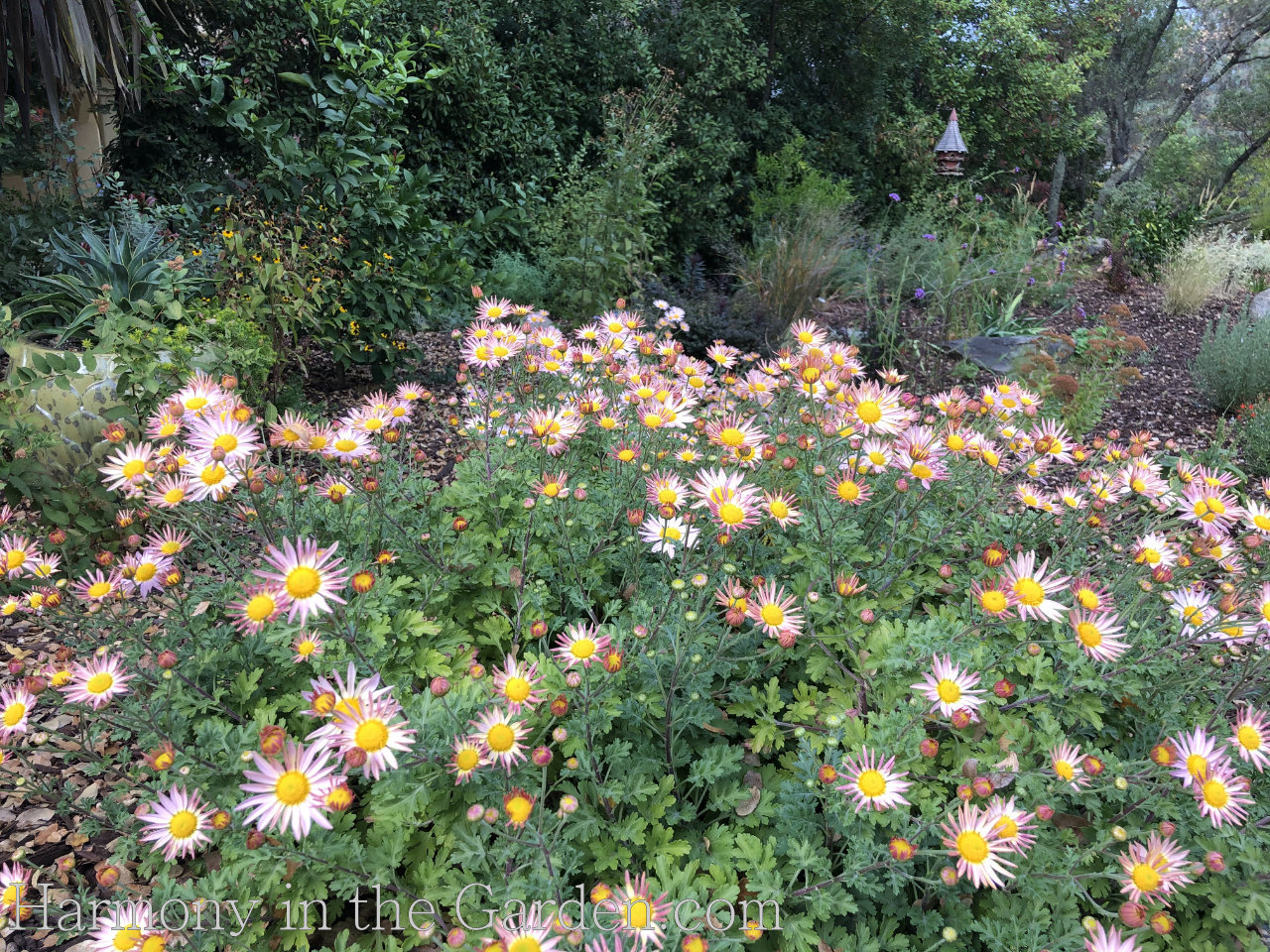
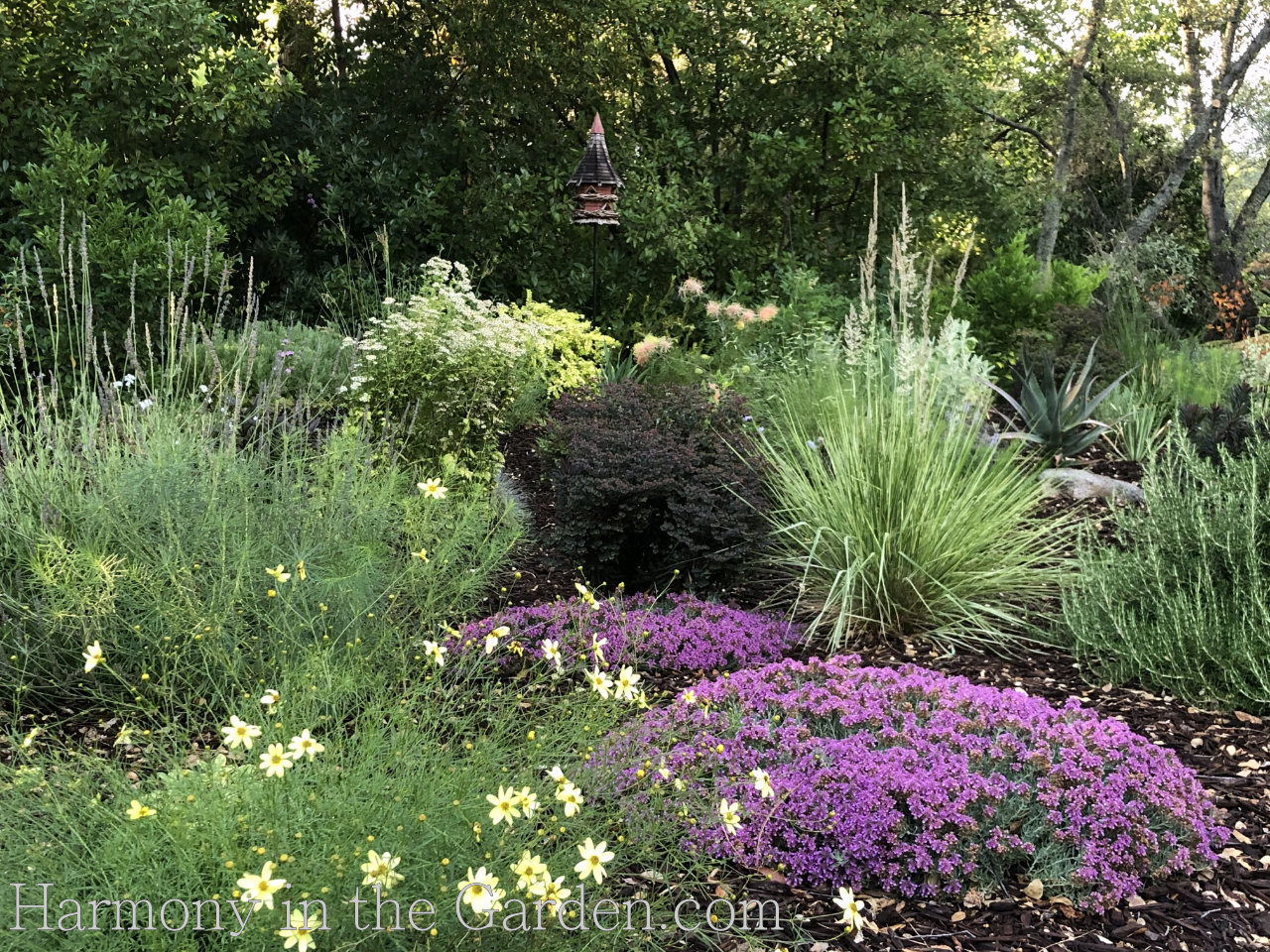
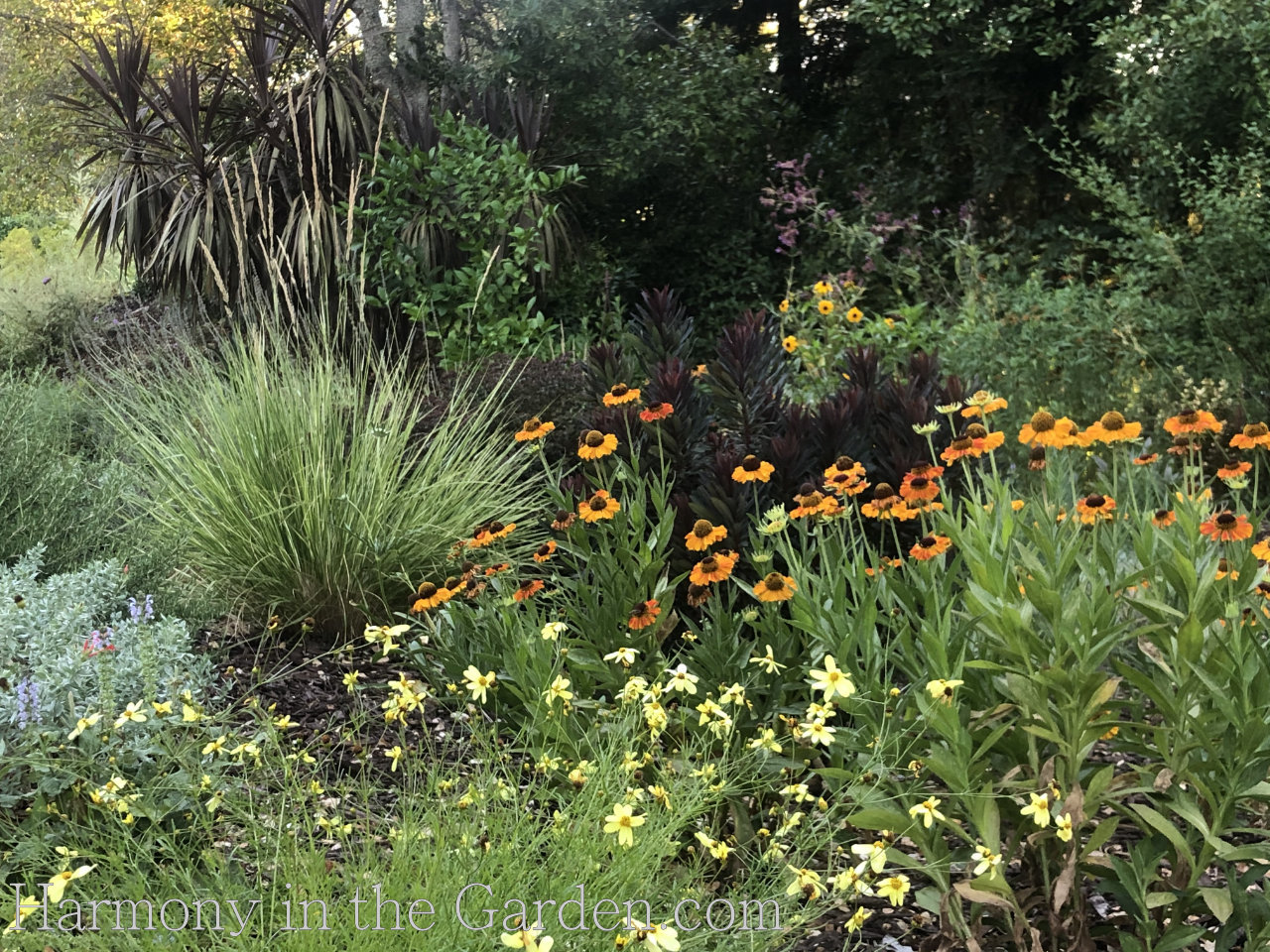

Mid-layer
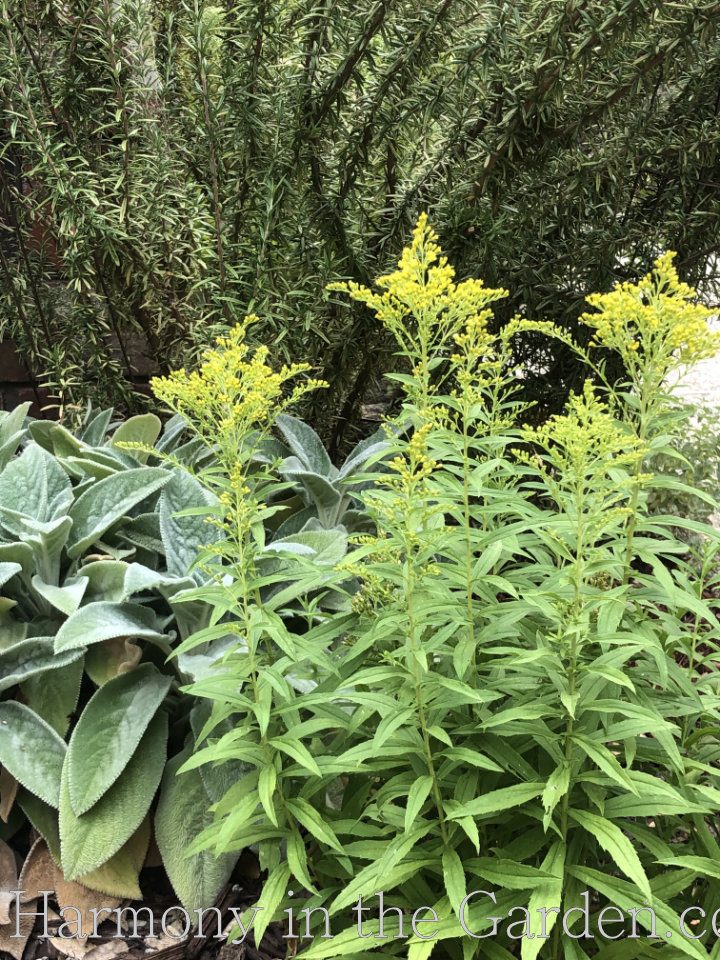
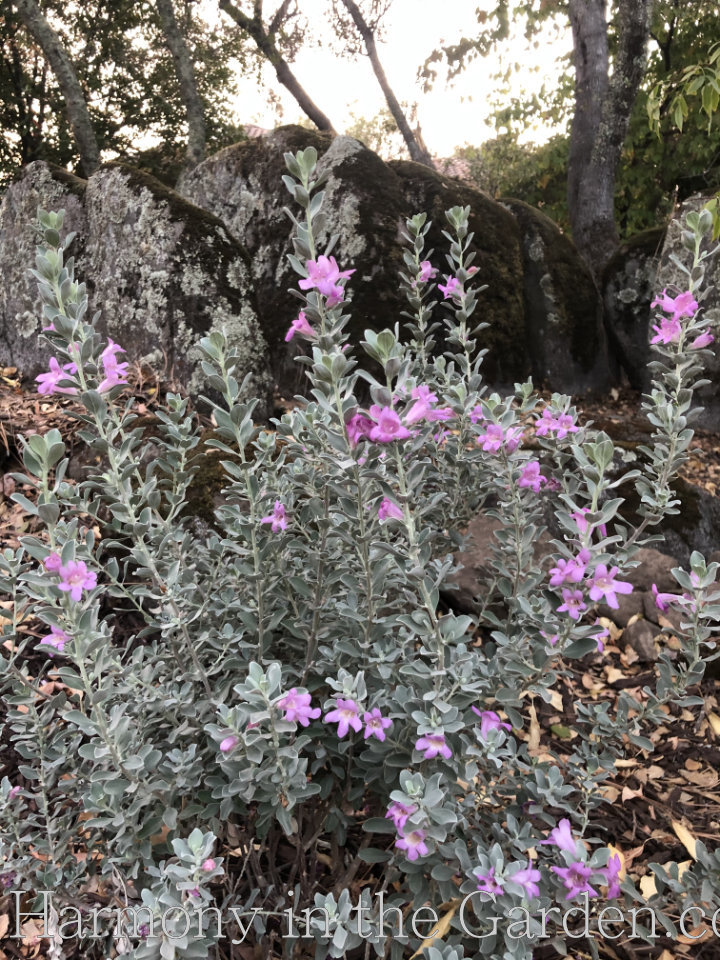
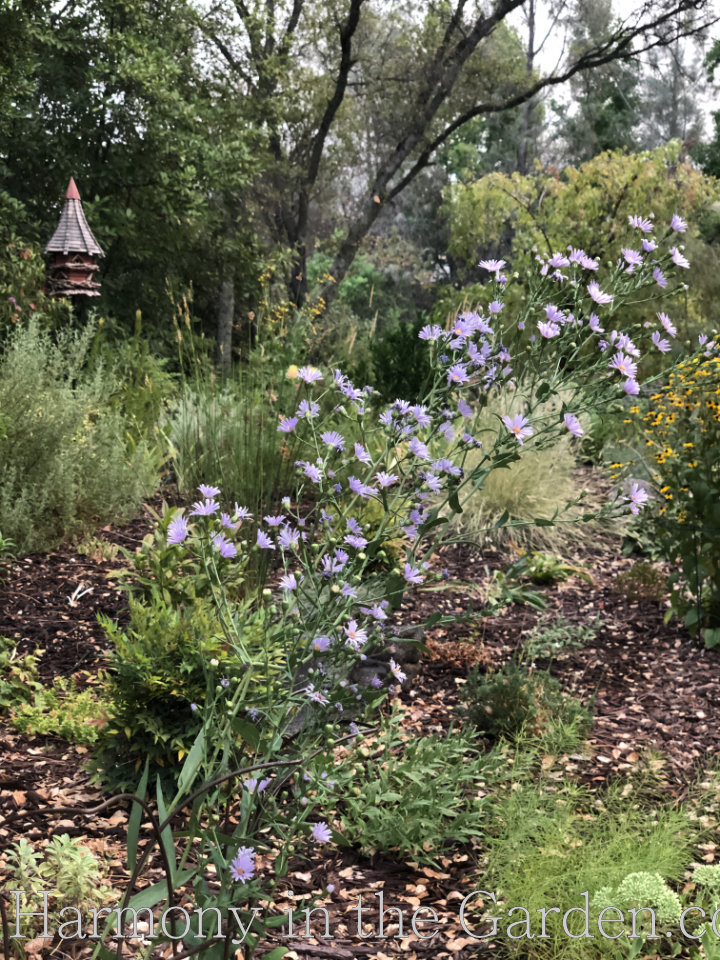
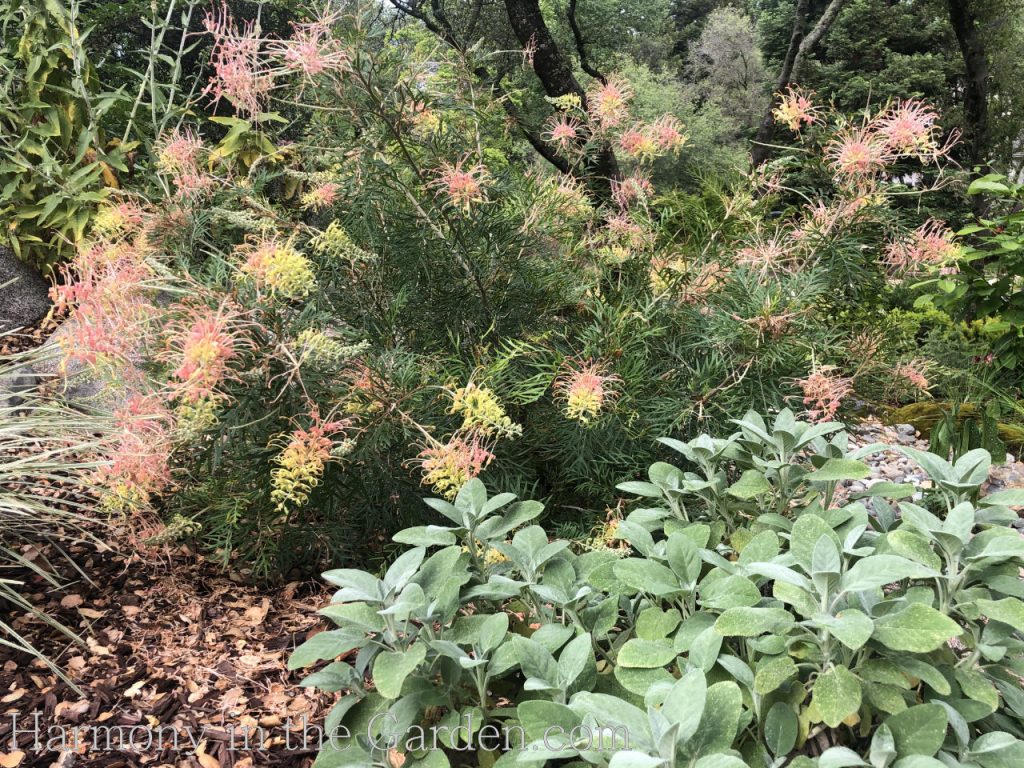
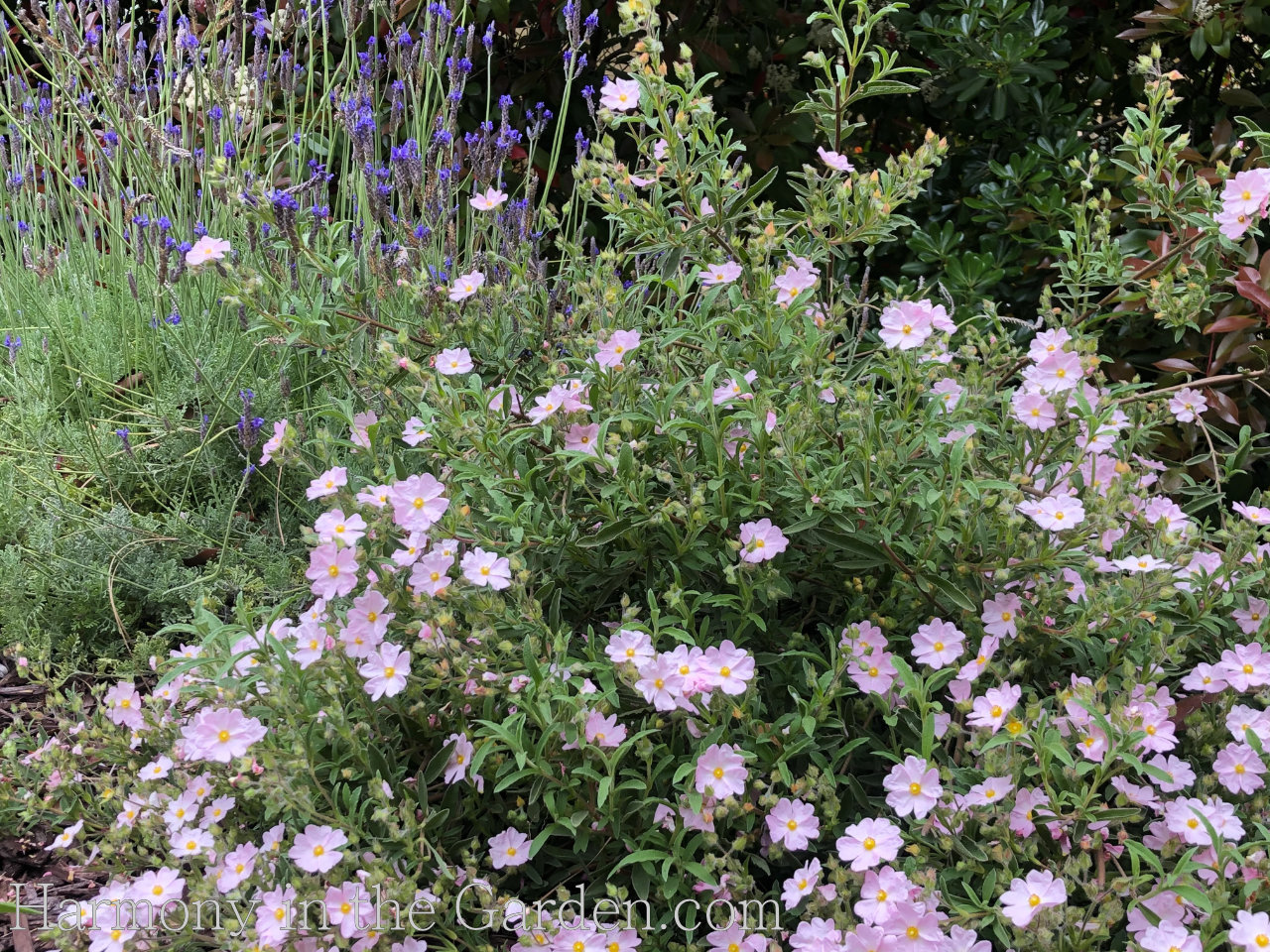
Tallest-layer (welcome to the land of the giants!)


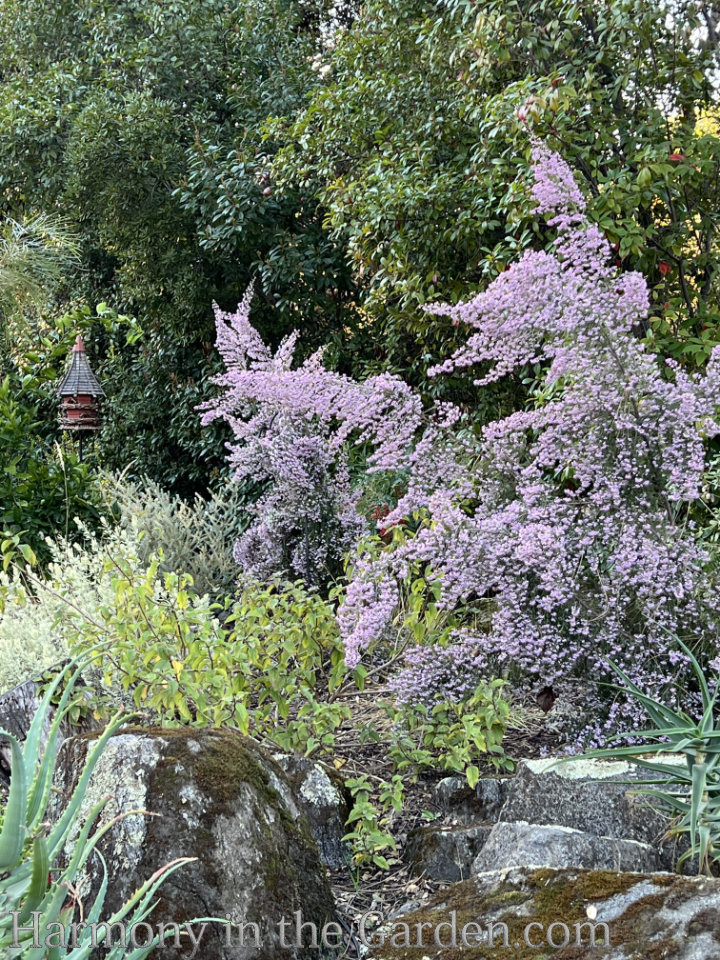

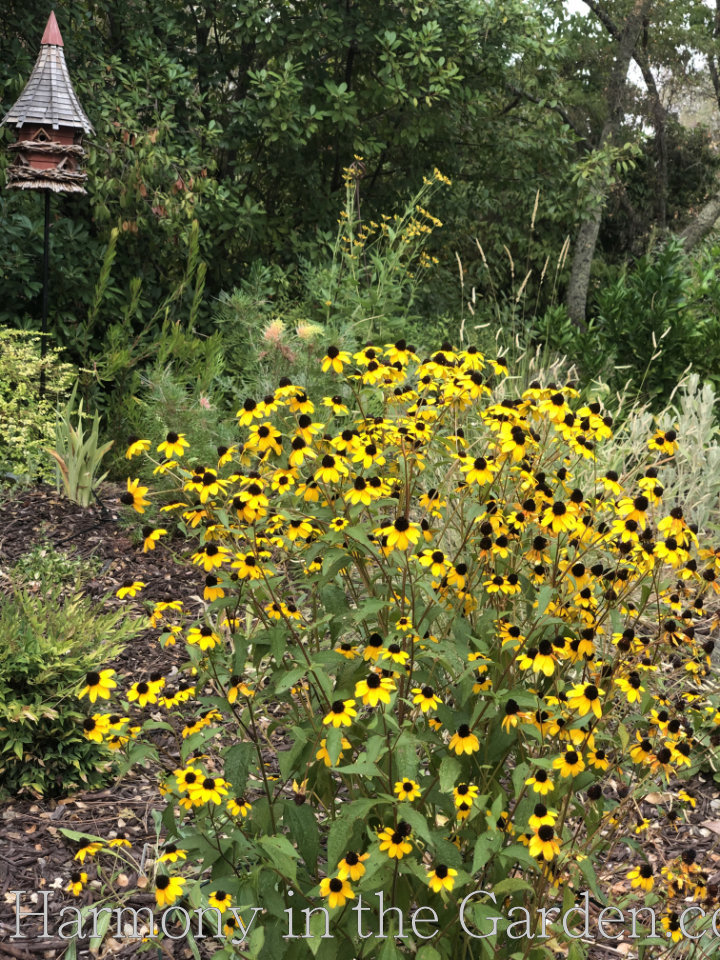
4. Contrasting bloom times

Staggering your garden’s bloom times is critical to prevent your garden from blooming all at once, then languishing throughout the rest of the year.
Not only aesthetically speaking, but for the benefit of pollinators, as well.
In a warm climate such as ours, pollinating insects are out and about most of the year.
Therefore, it’s critical to provide food for them through all seasons. It can be a little tricky to find blooming plants in the winter, but even if it’s just a little something, they’ll appreciate it.
I thought it would be helpful to categorize the plants I’ve talked about above by seasons.

LATE WINTER
-Salvia ‘Lavender Lace’ (pictured here & below) is a STUNNING late bloomer, starting in December and lasting through March!
-Rosemary ‘Mozart’
-Erica canaliculate ‘Rosea’ (click here for more towering favorites!)
-Quince (not in this part of my garden, but nearby, and BOY do the Pipevine Swallowtails go crazy for the flowers! click here for proof!)
-Grevilleas & Westringeas (click here for my favorite winter-blooming varieties)


SPRING
– Teucrium (then sporadically throughout the summer)
– Phlomis (pictured here)
– Ceanothus & Cistus
– Eremerus (remember my obsession with them?)
– Aloes & Agaves
-Westringeas & Leonotus
-Penstemon, Echinacea, Euphobias, Amsonia
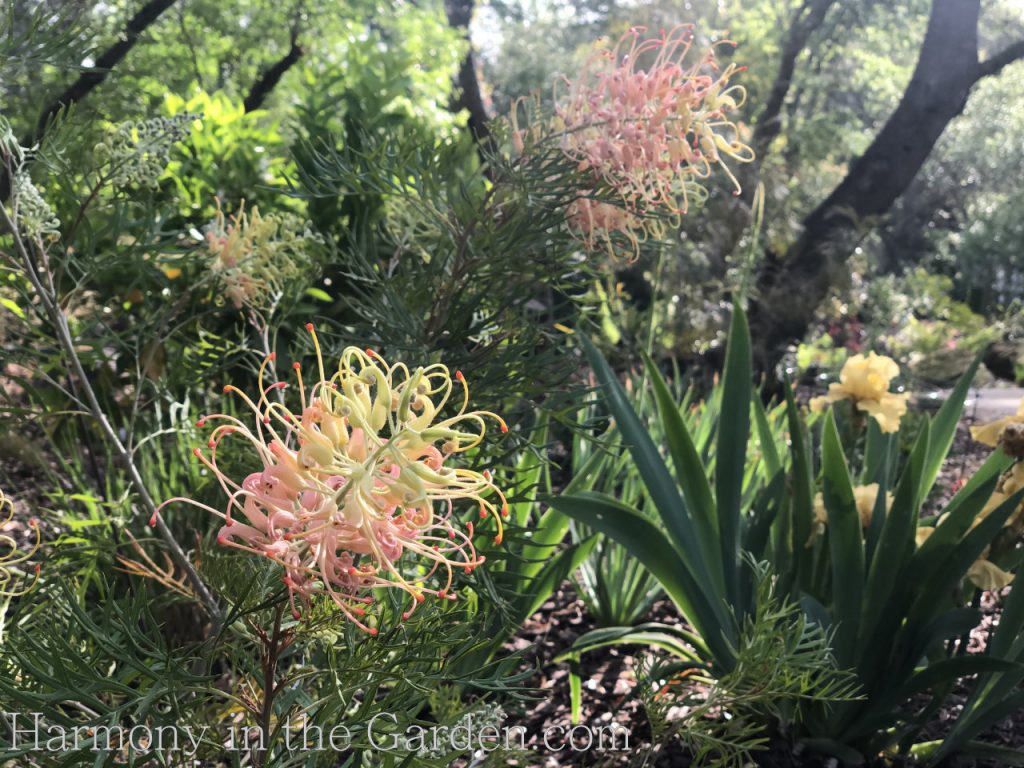
SUMMER
-Grevilleas (pictured here) which bloom throughout fall and winter, too!
-Rudbeckia
-Asters, & Salvias & Asclepias (Butterfly Weed)
-Lantana & Leucophyllum (Texas Sage)
-Verbena bonariensis
-Solidago ‘Little Lemon’
-Eriogonum (throughout the fall, too!)
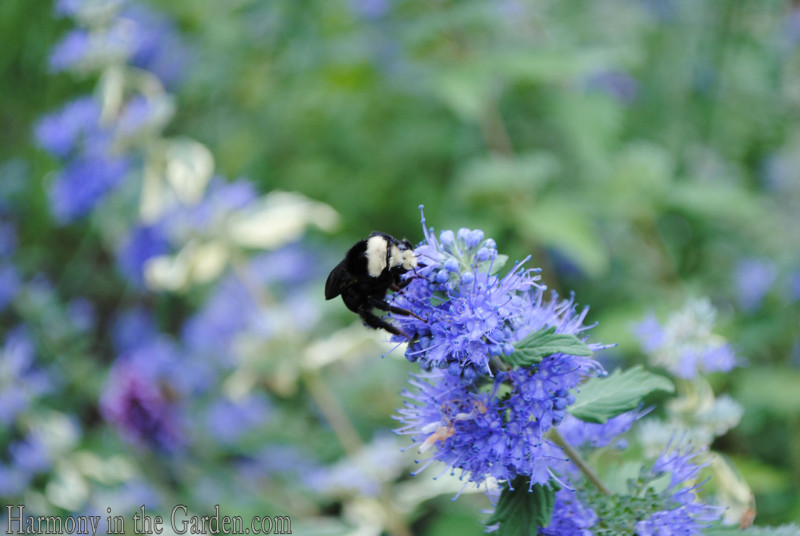
FALL
-Caryopteris ‘Bluebeard’ (pictured here)
-Chrysanthemum ‘Sheffield Pink’ (for more amazing pics of this plant, click here)
-Salvias & Rudbeckias (they just keep on going!)
-Sedum ‘Autumn Joy’
-Solidago ‘Fireworks’
-Eriogonum
-Leonotis (Lion’s Tail)
My reward for all of this hard work?
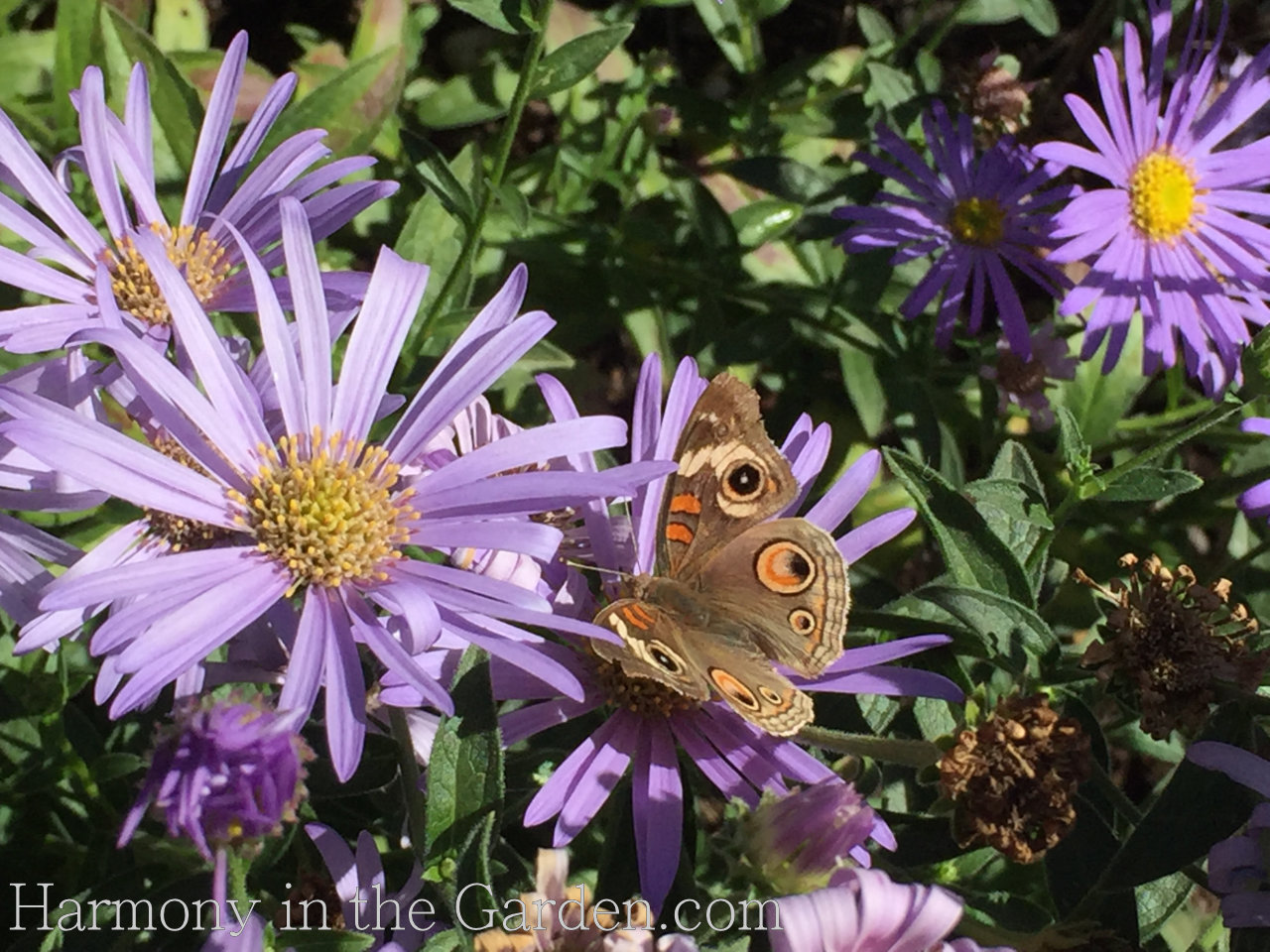
Seeing the amazing life in my garden is a source of constant joy, whether it’s dragonflies, butterflies, bees, and hummingbirds.
When I moved in three years ago, there wasn’t a butterfly in sight.
But now?
Just take a look at what I’ve found this past week in my garden!



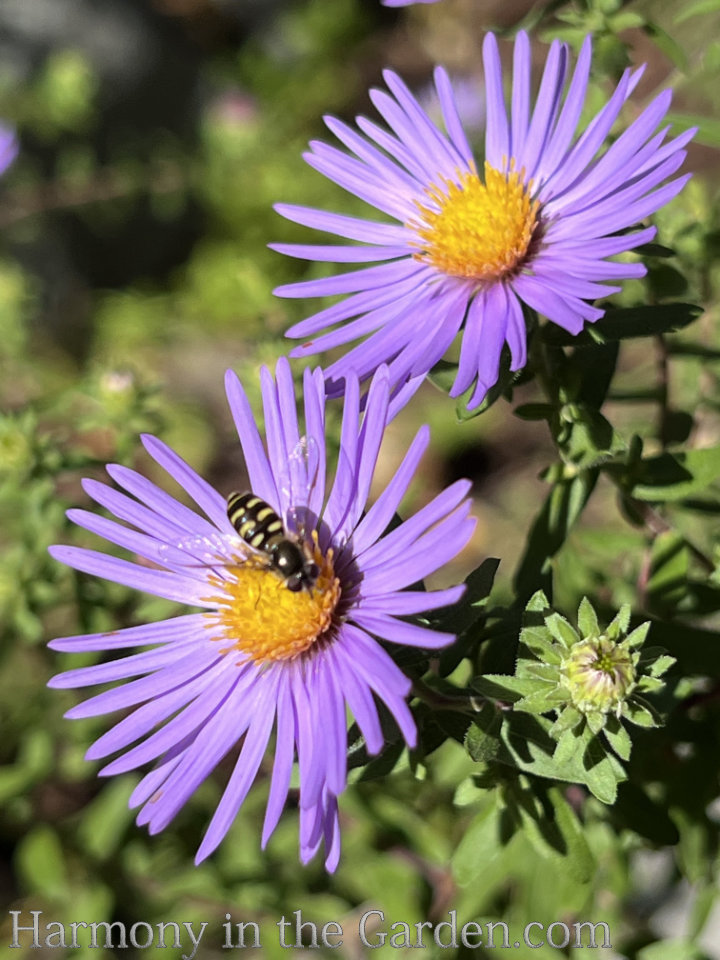
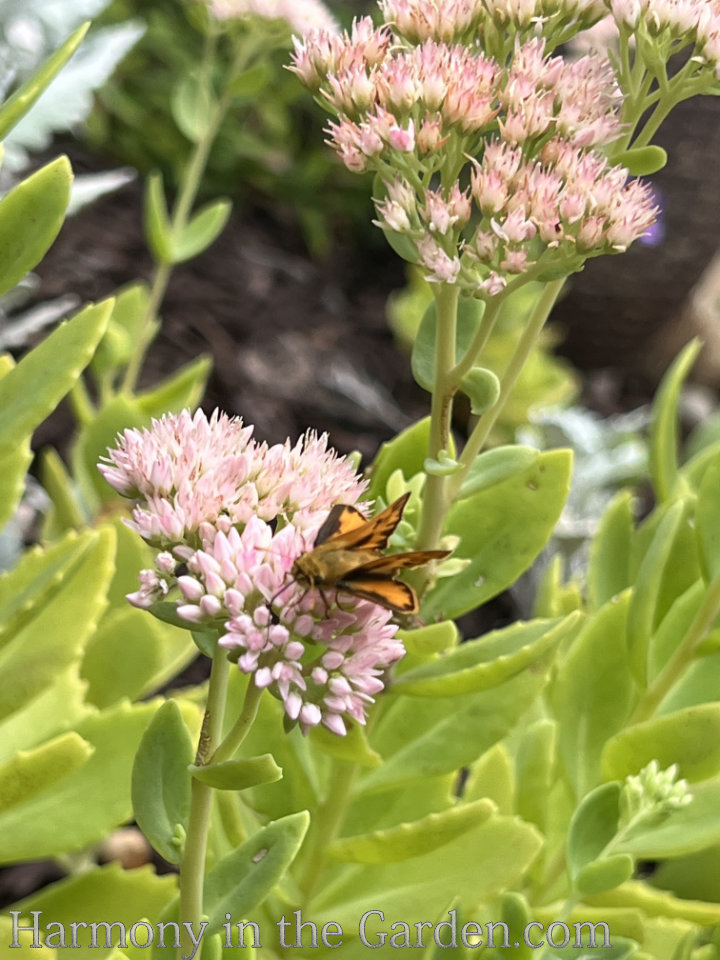

Oh, and if you’re wondering why I haven’t included many salvias, it’s because I’ve written an extensive post about the Four Seasons of Salvias.
Yep, you read that right – FOUR seasons! Click here to find out more.
For more reading on pollinators in the garden, click here or this article regarding bee hotels (something else I need to add to my garden!)
So, what are some of your favorites? I’d love to know as I have plenty of space to add some more!
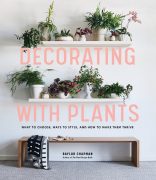




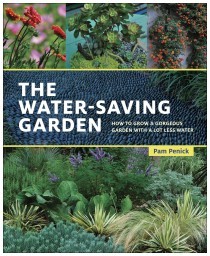
16 Comments
Hi Rebecca – on rereading this article, I realize I forgot to ask you how you grow Eremurus. I have tried lots of different ways but have been pretty unsuccessful. I follow all the instructions but – no luck. Any tips? NAN
Hi Nan – I also replied via email, but I’ll also leave my response here for others who might be interested: I read everything I could, hoping to plant them with the best odds of success, and I think it worked! We’ll see, though, if they return again (fingers crossed.) As I recall, I soaked their roots in water for about an hour or two first, then dug a wide, shallow-ish hole so the top of the tuber/bulb would be 1” under the soil. On top of the soil (which was already lightly amended a year or so ago with compost) I also placed a healthy handful of grit to aid in drainage during the winter as soggy roots are the death of these plants. I have a single emitter placed to the side, to provide a little water throughout the summer – hopefully not too much, and not too little (time will tell.) I just dug around my dormant tubers and found some healthy roots, so I’m hopeful!
This is so helpful in thinking through all the angles and opportunities in designing around pollinators (and beauty!). Thank you for being so generous with your experience. We are just now planning a major remake of our garden, pollinators are central) and this is so timely! Now if I could just add in a few additional criteria: deer, rabbits and gophers…. ha!
Hi Karen – I’m so glad you enjoyed this post! I have TONS of deer, and this area of my garden is completely open to them. I see proof of their cruising around (via ‘presents’ left on the ground for me-ha!) and am happy to say they don’t touch the plants I’ve mentioned (except for the ceanothus.) Since deer and their appetites vary region by region, your experience might be different, but overall I’d say these plants are a safe bet to try in your garden. Rabbits and gophers, however, another story…..ugh. Good luck with your garden plans!
All so beautiful Rebecca!
Thank you, Maia – how are you feeling? I hope you’re hanging in there with all the drama going on in life right now!!!
Thankyou Rebecca, following your garden’s creation had been wonderful. Gardens and being able to take care of them are two of the greatest gifts we are lucky to enjoy. I live in Hobart, Tasmania, the southern island state of Australia. We have belts of dry country too, but nowhere near as hot, so most if your plants are available here and grow well.
Thankyou Rebecca, for your great effort to let other gardeners share your beautiful garden.
Thank you so much, Ruth, and it’s so nice to ‘meet’ you! I had to look up Hobart, Tasmania to see where you live and it looks like an absolutely stunning location. You’re so lucky to live there – near the water, plenty of glorious Australian plants (which are my favorite, if you haven’t already guessed!) and not as hot as I am here in Granite Bay. Sounds like heaven!!!
Be still my heart with your lovely garden and the wonderful insects you have attracted!
Thank you, Susan! 🙂
Thanks Rebecca for simply showing all the design considerations, plus numerous plants for each category! I’m also mindful of placing deciduous perennials in front of evergreen shrubs for contrast.
You’re so right, Marianne – another contrast! Contrasting evergreen with perennial/deciduous plants!
Yes, a beautiful educational post that is a great resource. Wonderful transformation.
Thank you, Barbara, I’m so glad you enjoyed this post. Happy gardening!
This is one of the best articles I have ever read in terms of all of the different garden design considerations. I particularly appreciate the inclusion of bloom times through the seasons. Beautiful garden, great article. Thank you.
Thank you so much, Nan, what a compliment! I’m so glad you enjoyed my post and I hope it’s given you some ideas for your garden. 🙂